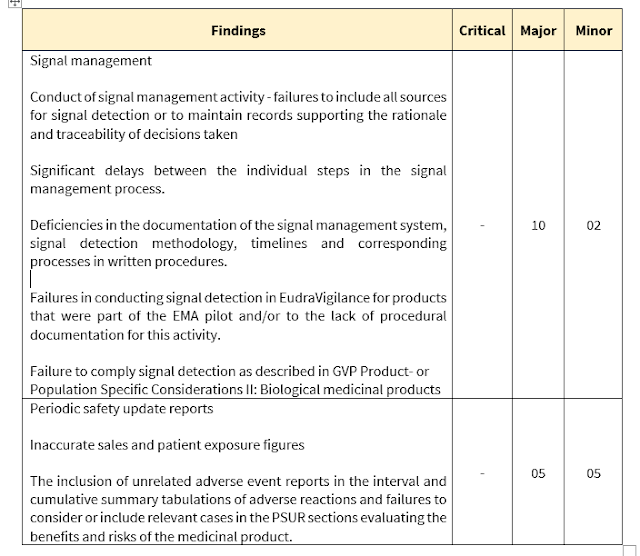Service Level
Agreement (SLA) is generally mutual commitment between service provider and a client. In pharmacovigilance
industry, pharmacovigilance
service provider and pharmaceutical company (client) come together in agreement
for various PV activities. This could be single PV activity or End to End PV
activities on behalf of client.
Pharmacovigilance
SLA is not differ from another domain like IT industry where it prevails since
long. It contains following common components of any SLA like –
·
Nature and scope of work
o
Region
specific (USA, EU or ROW) or Worldwide
o
Single
PV activity (ICSR processing or literature
review, etc.) or End to End PV Activity (ICSR processing, Literature Review, Aggregate
Reports (PSUR/ADCO/PADER), Risk Management Plan (RMP), Signal Detection, etc.)
o
ICSR
Processing - All type of ICSR processing (Regulatory, Literature, Spontaneous)
or specialized ICSR processing i.e. clinical trial or litigation, processing
and case submission timelines
o
Literature
Review – Literature review from global databases like Embase, PubMed or local
journal review or both local and global review, preparation and maintenance of
search strings
o
Aggregate
Reports – Aggregate Report schedule preparation and maintenance, Ad-hoc reports,
Nature of report format (PSUR, PBRER or regional specific like ANVISA, CDSCO,
COFEPRIS, etc.), timeline related to finalization of draft and submission
o
Risk
Management Plan (RMP) – New RMP or Maintenance of RMP, preparation and
management of additional risk minimization measures (ARMM) or additional pharmacovigilance
activities like non-clinical studies, clinical trials or
non-interventional studies.
·
Work management procedure
o
SOP
to be followed (Client SOP or Service Provider SOP)
o
Work
on inhouse client database or other commercially available database i.e. ARISg,
ARGUS
o
Timelines
to be followed for each activity
·
Quality parameters
o
Quality
scoring for ICSR, Literature Review, Aggregate Reports, RMP and Signal
detection activities
·
Compliance check
o
Regulatory
compliance check
§ ICSR submission
§ Aggregate report submission
o
SLA
compliance check
o
SDEA
compliance
·
Business Continuity Plan (BCP)
o
Business
Continuity Plan (BCP) details in case of natural disaster or man-made disaster
·
Audits & Inspection
o
Internal
audit and frequency
o
Audit
of each other
o
Audit
of business partners and affiliates
o
Inspection
handling plan, if any specific condition.
·
Penalty
o
Financial
penalty in case of quality and quantity deviation from SLA
·
Termination clauses
o
Terms
and conditions where termination of SLA to be impose like significant non-conformity
in PV process
o
Critical
regulatory observation due significant defect in service provider’s procedure
One should
remember that SLA is a dynamic document and can be drafted and modified based
upon the business need of pharmacovigilance service provider and pharmaceutical
company (aka client).
Though
dynamism present in SLA, each points of SLA should be thoroughly reviewed by
each party who enters in to agreement.



